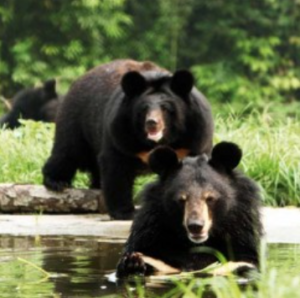About Bear: Fall Hunting Season
The plump bear sow spied a few of the last remaining berries as she lumbered between the now-bare trees. The late November days were getting shorter and colder, signaling that she should prepare for her extended rest.
 She froze. In the distance, she could sense movement from a hunter, camouflaged in greens and browns, hidden behind a thick tree trunk. In a flash, she swung toward the unknown hazard and reared up. Everything about her was built for strength, not speed: her massive shoulders, short back and feet bones (called metapodials), and thick muscles that ran the entire length of her legs instead of tapering toward the foot, as would happen with a faster animal like a lion.
She froze. In the distance, she could sense movement from a hunter, camouflaged in greens and browns, hidden behind a thick tree trunk. In a flash, she swung toward the unknown hazard and reared up. Everything about her was built for strength, not speed: her massive shoulders, short back and feet bones (called metapodials), and thick muscles that ran the entire length of her legs instead of tapering toward the foot, as would happen with a faster animal like a lion.
She always faced danger head-on and facing forward, to take advantage of her massive size and strength. Scientists hypothesize this is why bears have just a small, furry flap of skin instead of a tail. Unlike other animals, like dogs, who use their tails to convey their feelings, a bear’s backside is usually out of sight when it communicates, making a tail superfluous.
This time, her strategy didn’t work. The hunter fired and the large animal fell to the ground with a muffled thud.
